Spring Bee Hiving Moon
“Sometimes, you have to step outside of the person you’ve been and remember the person you were meant to be. The person you want to be. The person you are.”
H.G. Well
 Drove out to Stillwater and picked up my California girls. About 16,000 of them. Sprayed’em down with sugar water when I got home. Unloaded a 5 gallon pail of prosweet, a food supplement for this early period when nectar is in short supply, and two gallon pails with holes in the top for feeding (turned upside down).
Drove out to Stillwater and picked up my California girls. About 16,000 of them. Sprayed’em down with sugar water when I got home. Unloaded a 5 gallon pail of prosweet, a food supplement for this early period when nectar is in short supply, and two gallon pails with holes in the top for feeding (turned upside down).
Later today, around 5 pm, I took the packages, the two gallon pails filled with syrup, a pollen patty and went out into the orchard. There I took the hive’s copper tops off, then the hive box cover and removed three frames from the center of the hive box.
Rain, a light rain fell. And Rigel came in through a gate I had forgotten to close and ate the first pollen patty. In spite of not being a bee. Sigh.
So, back down to the refrigerator for another pollen patty.
Back up to the orchard and out to the packages. I pried the syrup containing can out of the package, sprayed the bees again with plenty of sugar water, removed the queen cage and put it in my pocket, then rapped the container sharply on the remaining frames and 7,000 to 8,000 bees fell onto the floor of the hive box.
I spread them around with a bee brush, then took the queen out of my pocket. First, check that she’s alive. Yep. OK. Pull back the small screen on her cage while placing the cage in the hive box. Tap it and make sure she falls into the bees.
Replace the three frames, gently. Not killing the queen is an important part of this whole process.
Put a pollen patty on top of the frames, away from the hole in the hive cover since that’s where the syrup will come into the hive box and put the hive cover back on the box. At that point invert the white plastic pail over the oblong opening in the hive cover, place a medium sized box over the pale and the copper top over that.
That’s it for the first day.
There were a couple of moments. A bee crawled up into my glove. I removed it. All the time saying, if I’m calm, the bees are calm. This is sort of true though even now, four years in, I still get an adrenalin pump when the bees hit the mesh on my bee veil.
I didn’t get all the bees out of the packages, most, but not all. It was those stragglers that took off after me. They were not a problem. But, they could have been.
The hives look great in the orchard; they give it a productive, yet homey feel.

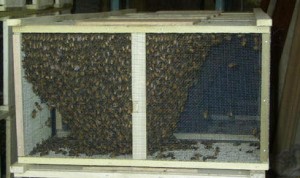 hummed in the back, a pleasant noise.
hummed in the back, a pleasant noise.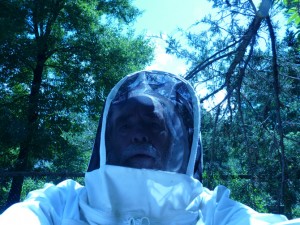 maybe enough to get them through to the dandelions.
maybe enough to get them through to the dandelions. from the airport. Makes the drive much shorter and I get a good meal in the bargain.
from the airport. Makes the drive much shorter and I get a good meal in the bargain.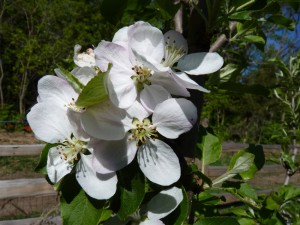
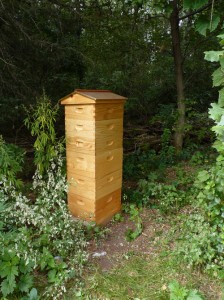 the new packages takes place as soon as possible after I pick up the bees from Nature’s Nectary outside Stillwater. They may wait a day, but not more.
the new packages takes place as soon as possible after I pick up the bees from Nature’s Nectary outside Stillwater. They may wait a day, but not more.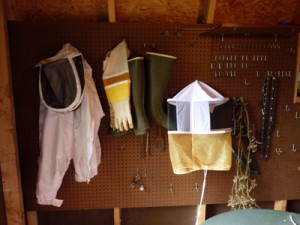 the colonies. I’m also going to check out better ways to have a bee proof environment in which to extract honey. It was pretty bad last year.
the colonies. I’m also going to check out better ways to have a bee proof environment in which to extract honey. It was pretty bad last year.